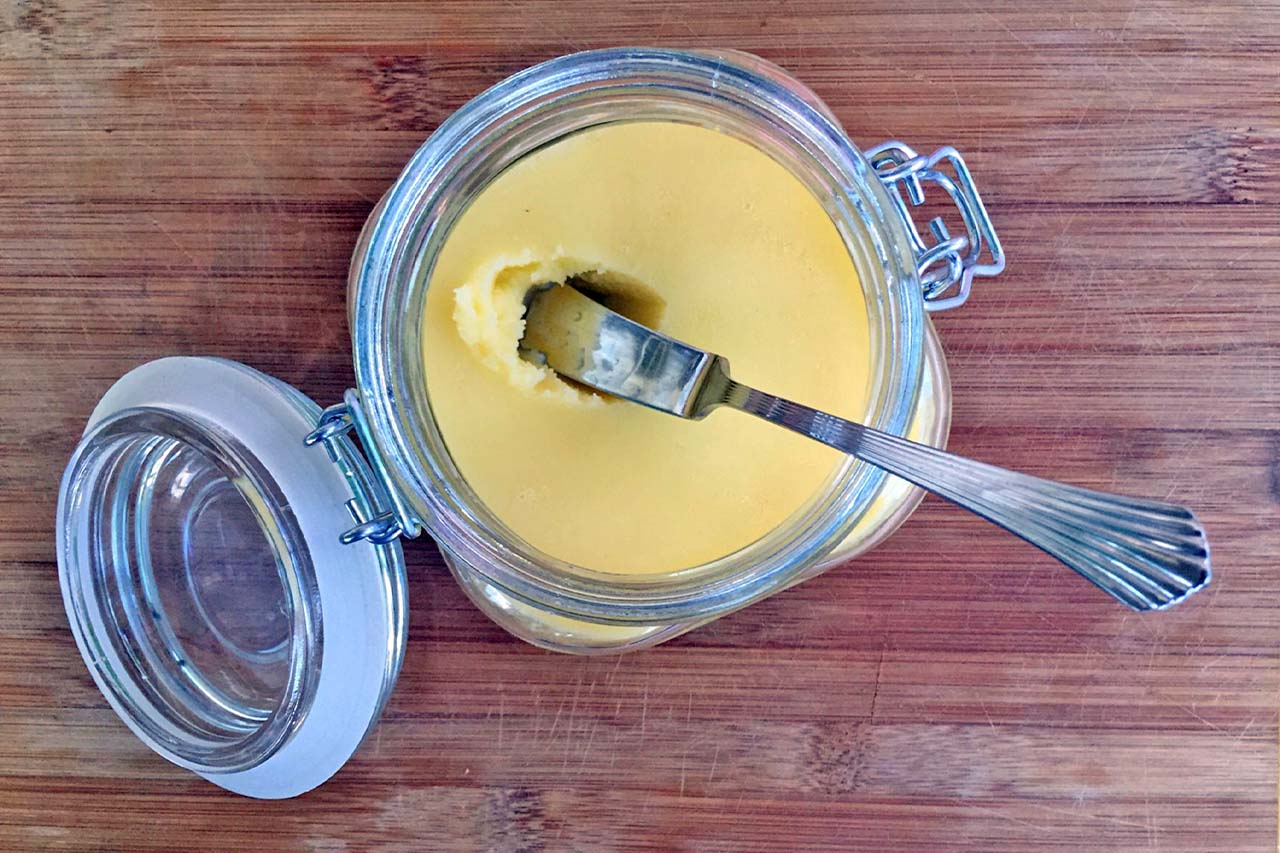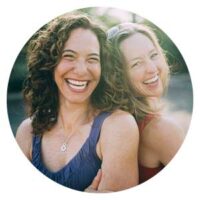This “How to Make Ghee” recipe is from our cookbook: nourish: a community supported cookbook.
Ghee is pure butterfat – a type of clarified butter. However, ghee isn’t simply clarified butter because ghee is traditionally cooked for a longer period of time. It is regarded in Ayurveda as one of the most “sattvic” foods known, which means that it helps the mind become clear and stay focused. It has an extremely high smoke point, so it is ideal for cooking at high temperatures, unlike most other oils and fats.
Ghee helps to synergize nutrients in food as well as adding deliciousness. It may be used to boost flavor of sweet and savory dishes and may be used to bake, sauté or fry. It may be used as a base for herbal ointments as well, to treat burns and rashes.
Ghee keeps indefinitely without refrigerating as all of the elements that cause butter to spoil have been removed (butter contains 18% water and 2% protein). You may keep the jar on the counter for easy access. Make sure to keep it covered and always use a clean spoon when using it to avoid cross contamination.
Organic ghee can be found in most health stores, but it is very easy, much less expensive, and much more delicious to make your own. We suggest making ghee using organic butter from grass-fed cows which contains naturally occurring omega-3s, specifically conjugated linoleic acid (CLA) and vitamin K2, a vital nutrient that benefits bone, cardiovascular, skin, brain and cancer prevention.
Here is our own ghee recipe:
MAKES 1½ CUPS
1lb organic grass-fed cow butter, unsalted
- Place the butter in a small saucepan and slowly melt over medium heat.
- When the butter comes to a boil, reduce the heat to low and simmer, uncovered and leave undisturbed for about 30 minutes. Then watch closely for the next several minutes for the following indicators.
- When the temperature of the water within the butter reaches its boiling point, the water will begin to vaporize and the butter will look foamy and make crackling noises.
- When the crackling stops and the sound becomes more of a boiling sound, the foaming should stop.
- At this point, the butter will no longer look cloudy, but be a clear, golden yellow.
- You may notice a tan-colored film on the surface and bumpy tan sediment on the bottom of the pan (this is the milk proteins and salts).
- Pour the ghee through a fine-mesh strainer or several layers of damp cheese cloth into a sterilized jar.
- Allow to cool uncovered, and then cover tightly.






